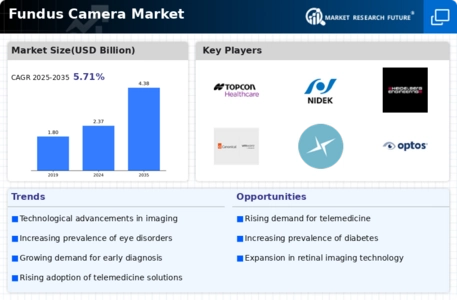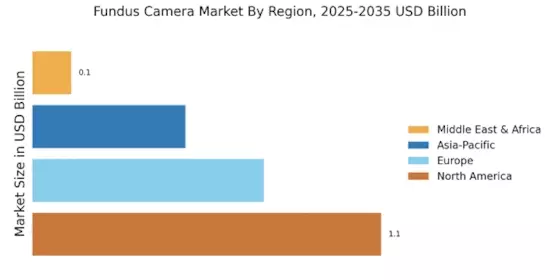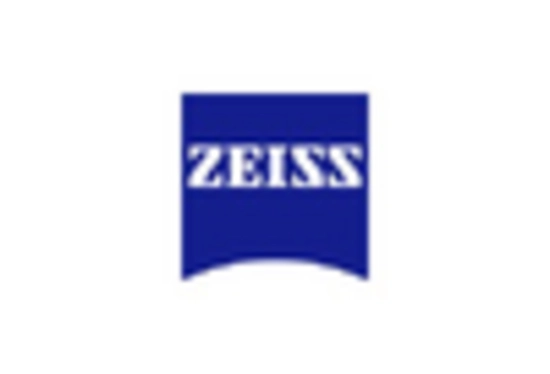Growing Geriatric Population
The Fundus Camera Market is poised for growth due to the increasing geriatric population, which is more susceptible to various eye conditions. As individuals age, the risk of developing ocular diseases escalates, necessitating regular eye examinations. The World Health Organization has reported that the global population aged 60 years and older is projected to double by 2050, highlighting the urgent need for effective diagnostic tools. Fundus cameras play a crucial role in the early detection and management of age-related eye disorders. Consequently, healthcare facilities are likely to invest in advanced fundus camera technology to cater to this demographic. This trend indicates a promising outlook for the Fundus Camera Market.
Rising Incidence of Eye Disorders
The Fundus Camera Market is significantly influenced by the rising incidence of eye disorders worldwide. Conditions such as diabetic retinopathy, glaucoma, and macular degeneration are becoming increasingly common, particularly among aging populations. According to recent statistics, the prevalence of diabetic retinopathy is projected to increase, with millions of individuals affected globally. This alarming trend is driving the demand for effective diagnostic tools, including fundus cameras, which are essential for monitoring and managing these conditions. As healthcare systems strive to address the growing burden of eye diseases, the Fundus Camera Market is likely to expand, with manufacturers focusing on developing more efficient and user-friendly devices.
Expansion of Telemedicine Services
The Fundus Camera Market is benefiting from the expansion of telemedicine services, which have gained traction in recent years. Telemedicine allows for remote consultations and diagnostics, making eye care more accessible to patients in underserved areas. Fundus cameras equipped with telemedicine capabilities enable healthcare providers to capture and transmit retinal images for remote analysis. This innovation not only enhances patient convenience but also facilitates timely interventions. As telehealth continues to evolve, the demand for fundus cameras that support remote diagnostics is expected to grow. Market analysts suggest that this trend could lead to a significant increase in the adoption of fundus cameras within the Fundus Camera Market.
Increased Focus on Preventive Care
The Fundus Camera Market is witnessing a heightened emphasis on preventive care, particularly in the realm of eye health. As awareness of ocular diseases grows, healthcare providers are increasingly adopting fundus cameras for routine screenings. This shift is driven by the recognition that early detection can significantly reduce the risk of vision loss. In many regions, healthcare policies are evolving to support preventive measures, leading to an uptick in the installation of fundus cameras in clinics and hospitals. Market data suggests that the preventive care segment is expected to account for a substantial share of the Fundus Camera Market, reflecting a broader trend towards proactive health management.
Technological Advancements in Imaging
The Fundus Camera Market is experiencing a surge in technological advancements that enhance imaging capabilities. Innovations such as ultra-widefield imaging and optical coherence tomography (OCT) are becoming increasingly prevalent. These technologies allow for detailed visualization of the retina, enabling early detection of diseases such as diabetic retinopathy and age-related macular degeneration. The integration of artificial intelligence in image analysis further streamlines diagnostic processes, potentially improving patient outcomes. As a result, the demand for advanced fundus cameras is likely to rise, with projections indicating a compound annual growth rate of over 6% in the coming years. This trend underscores the importance of continuous innovation in the Fundus Camera Market.


















Leave a Comment